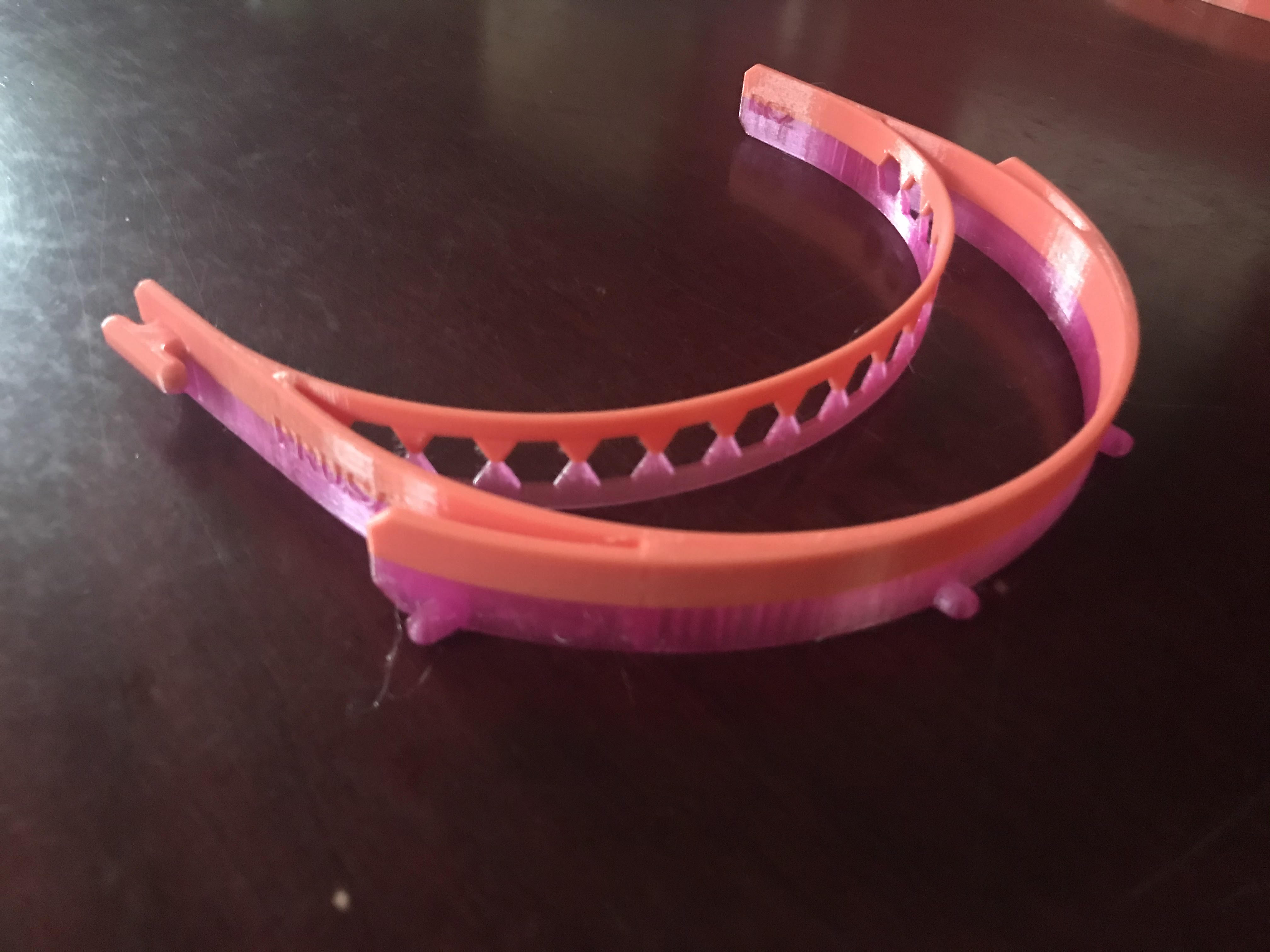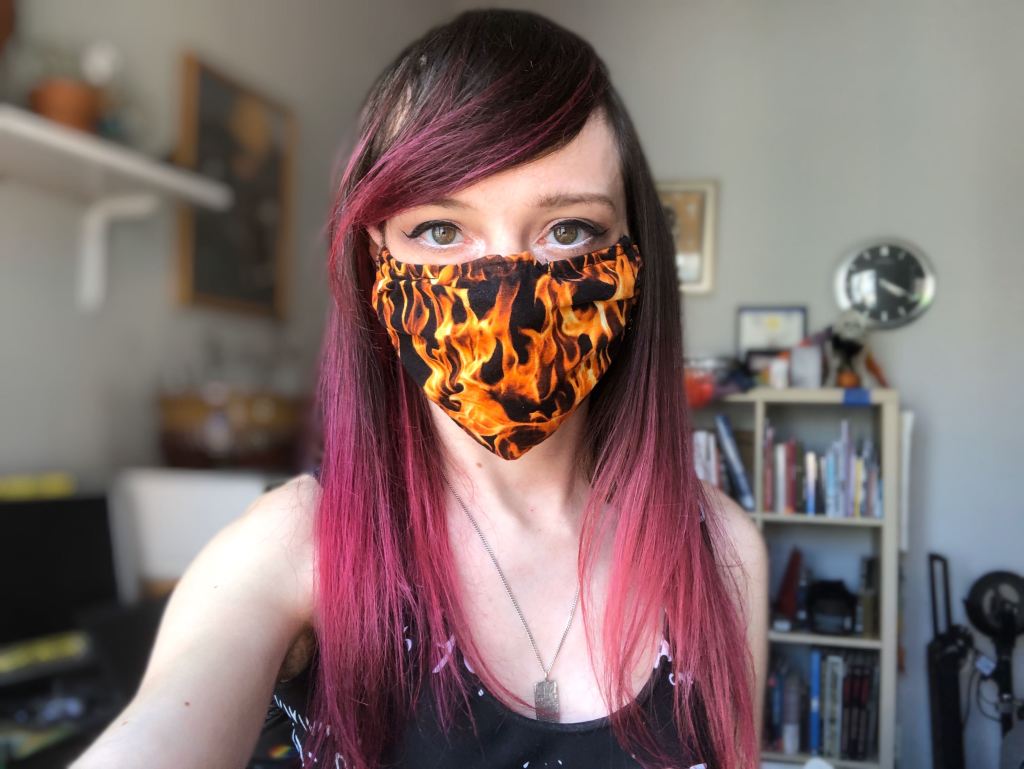Interest in DIY medical equipment has exploded in recent weeks, as the COVID-19 pandemic continues to cause severe shortages of masks, gloves, and other medical supplies.
On YouTube, popular DIY and Maker channels feature video tutorials on making surgical masks from everyday household materials, often set to cute graphics and unsettlingly saccharine music. Hospitals are driving the demand, with some providers publicly calling for people to donate masks made at home to healthcare workers in the field.
Videos by VICE
Over the past week, hundreds of amateur makers have formed decentralized production lines to get as many masks as possible into the sterilized hands of those who need them most. Even fashion designer and Project Runway star Christian Siriano jumped in, offering the help of his entire sewing team to New York Governor Andrew Cuomo via tweet.
“It hit me that I really need to do something,” Nellie Rose, a textile artist and clothing maker based in West Virginia, told Motherboard. “If we are in such a crisis where we are being asked as seamstresses and home sewists to make these, then we have to.”
After closing down her shop amidst the pandemic, Rose and a collaborator started Holler Mask Force, a group of over 50 home crafters dedicated to making masks. She assembled the group by contacting members of the sewing and maker communities over Facebook and Instagram, forming a decentralized effort to distribute hundreds of homemade masks to hospitals, urgent care facilities, and families in need.
After doing some research, I found that making a mask using household items is fairly simple, and producing them in bulk doesn’t require a team of professionals. So I sought out to make one myself.

For the past several weeks of COVID-19 lock-down, I’ve been delivering food and supplies to people via electric scooter as part of ongoing mutual aid efforts in my Brooklyn neighborhood. Since this sometimes means going into crowded grocery stores and pharmacies, I’ve been trying to limit exposure by wearing sterilized nitrile gloves and an N95 respirator (given to me months ago by a friend) whenever I run errands.
I’m not currently feeling sick, but it’s a known fact that the virus can spread even if a person doesn’t show symptoms. The N95 is considered the gold standard for medical-grade personal protective equipment (PPE), but it’s not designed to be reused indefinitely. And since the limited supplies should be reserved for healthcare workers on the frontlines and not scooter delivery girls, I needed to find an alternative.
Last week, the New York Sewing Center hosted an online mask-making workshop, as part of an effort to encourage local crafters to make PPE for shorthanded hospitals. Once I had found the right materials—and a friend with a sewing machine—I had a completed mask in about 20 minutes.
“For someone who has sewn before it’s pretty doable,” said Julia Morrow, a self-taught clothing maker based in Brooklyn who has been making masks during the crisis. For the sake of time (and to avoid needing to borrow her sewing machine), I asked Morrow to quickly stitch together a mask for me. But she said that even for beginners, it’s a challenging but achievable project.
“Watch a couple videos and allow yourself to mess up a couple times, and don’t rush it,” she said.
As experts have noted, masks aren’t a magic bullet for preventing the virus’ spread. While the N95 is designed to block 95 percent of particles, an improvised mask will be much less effective, depending on the materials used. Most commercially available masks use a material called non-woven polypropylene (NWPP), which acts as a filter. A cheaper and more porous variety of NWPP can be sourced from reusable grocery bags like the kind you get at Whole Foods. So I measured and cut out a strip of the material from a bag I found at home, then inserted it into the mask’s filter pocket to form an extra layer of protection.

Dr. Marybeth Sexton, an assistant professor at Emory University School of Medicine, said that while these makeshift masks won’t be as effective as an N95, they are still better than nothing. For example, she said that healthcare workers in the field can wear them over an N95 to prevent the medical mask from getting soiled, thus extending its lifespan.
“It’s not like they block nothing. They just don’t block quite as much as the medical-grade equipment,” Sexton told Motherboard. She also warned that wearing a mask improperly or without thoroughly sterilizing after extended use can further reduce its effectiveness.
Amateur makers have been exploring other ways to address the limited supply of medical-grade masks. Cristina Peterson, a neuroscientist and postdoctoral associate at the University of Minnesota, said she started using her home 3D printer to produce plastic frames for face shields after finding a design online.
“It’s been difficult to get definitive information about if the face masks would be helpful in preventing the transmission of coronavirus or not, so I started searching for other things I could print that were known to be safe and effective,” Peterson told Motherboard. Face shields are used by frontline medical workers to protect their masks from contact with a patient’s fluids (CDC guidelines require that a mask soiled by fluids be discarded).
After posting about the 3D printed designs on Facebook, Peterson says people started reaching out to her, forming a makeshift assembly line from a small network of home fabricators.
“I am planning on collecting all of the printed pieces from all of these different people and dropping them off with an acquaintance who has the materials to add the clear plastic front piece and the elastic headband, and can then hand them over to hospitals,” she said.

Meanwhile, public officials have been sending confusing and contradictory messages about whether the general public should be wearing masks. While stocks of medical-grade equipment should be reserved for healthcare workers, improvised and homemade masks could provide some benefit to vulnerable groups, like immunocompromised people and those with chronic respiratory conditions. Some public health experts further argue that when combined with other practices like social distancing, having everyone wear masks can help slow the spread of diseases like COVID-19. According to the Washington Post, the CDC is now considering changing its advice on masks to reflect that criticism.
Sexton said that there is no hard evidence that masks are effective at protecting members of the general public. But they could at very least offer peace of mind to people whose critical jobs force them to constantly interact with the public, like grocery store clerks—as long as they are worn properly.
“People are scared because this is something new, and that can be really frightening,” said Sexton. “If [wearing a mask] is something that allows people to feel comfortable and doing their jobs … I don’t think there’s anything wrong with that as long as you’re careful with how you use it.”
Nellie Rose from Holler Mask Forces worries that her masks might give people a false sense of security, and started including written disclaimers reminding people that they are not medical-grade equipment and must be cleaned and worn properly. Still, she says, in the midst of a global pandemic, some protection is better than none.
“We are essentially sending our soldiers into battle with CDC guidelines saying they can wear a bandanna, and that is fucked up,” said Rose. “If I can create something that’s better than a bandanna, then I will.”




